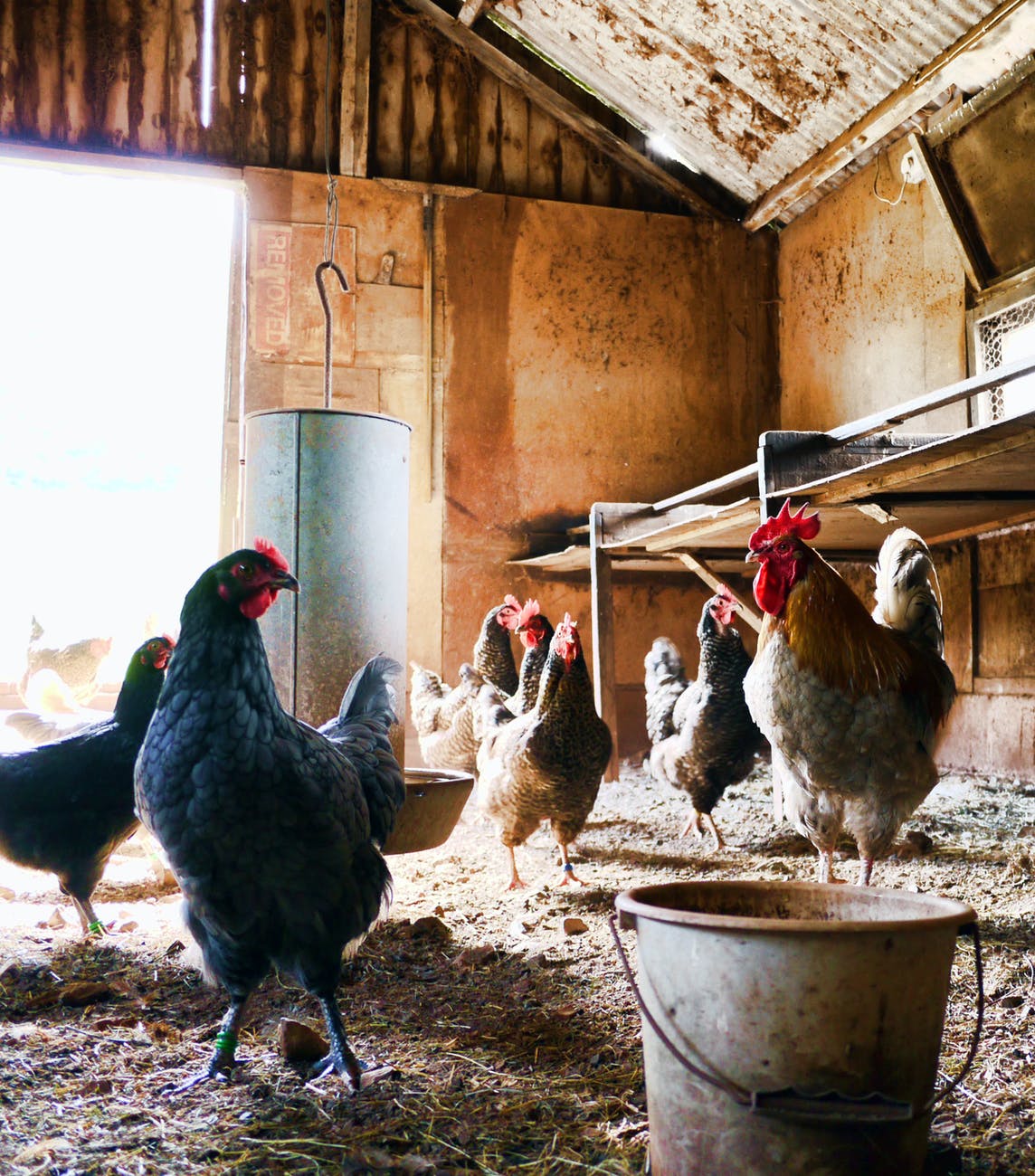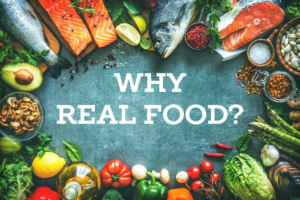Perhaps the Romans were having trouble trusting their purveyors of food products since they coined the term, “Caveat Emptor,” let the buyer beware. Did they have food labels to help them figure out what was what? We might not know what the Romans did but, today, we do know that labeling of food products has become the norm.
But labels can be confusing. You can be frustrated when you’ve opened the fridge at your favorite grocery, stymied by the assortment of egg cartons with the words “natural,” “antibiotic-free”, and “free range” written on them. What do these terms mean?
Whereas labels have been created by the government and third-party certifiers to inform consumers what they are buying, some terms are misleading, persuading consumers to purchase something that is not in alignment with their interests.
That’s why the onus is on us, the consumers, to educate ourselves, to understand what the labels mean, so we can make informed choices.
Fair-Trade
The Fairtrade Mark is the only label that indicates a product is certified by Flocert, an independent arm of Fairtrade International, which sets rigorous social, economic, and environmental standards for ethical labeling. For farmers it means safer working conditions and fairer pay.

Fortified
A food that has extra nutrients added to it that are normally not there, such as vitamin A and D, which are added to commercially produced milk and orange juice, and iodine added to salt.
However, it’s best for the absorption of vitamins and minerals to eat food that contains these nutrients, since the body prefers food in its natural state.
Gluten-Free
The FDA’s rule specifies that any foods that carry the label “gluten-free” must contain less than 20 parts per million (ppm) of gluten. This level is the lowest that can be reliably detected in foods using scientifically validated analysis methods.
Healthy
The FDA says that foods labeled “healthy” must be low in saturated fats and contain limited amounts of cholesterol and sodium. Certain foods must also contain at least 10 percent of vitamins A and C, iron, calcium, protein, and fiber.
The problem here is that what the government, or influential non-profits, consider “healthy” is sometimes proven not to be true, and what they decide is unhealthy is sometimes proven untrue. One salient example of the latter is the egg.
It is now widely recognized that eggs are a highly nutritious food based on their high-quality protein and compliment of vitamins and minerals. They are one of the most widely available economical sources of animal protein, vital to growing children, pregnant women, and the elderly.
In 1968, the American Heart Association (AHA) recommended that all individuals consume less than 300 mg of dietary cholesterol per day and no more than three whole eggs per week. It took the next 47 years for the egg industry to create research studies that proved the false correlation between dietary cholesterol, eggs, and heart disease.
Ironically, eggs are a major course of choline, which is associated with decreased plasma levels of homocysteine and inflammatory factors, whose presence in the body is related to increased cardiovascular risk.
From 1968 through the ensuing five decades, when people were afraid to eat eggs for breakfast, and switched to carbohydrate rich cereals, the nation’s obesity problem manifested and worsened.

Natural
The Food and Drug Administration (FDA) has not developed a legal definition of “natural.” So, its use is meaningless, therefore misleading.
When applied to meat and poultry products, the United States Department of Agriculture (USDA) states that “natural” means that these products can only undergo minimal processing without the use of artificial colors, flavors, preservatives, or other artificial ingredients.
However, these animals are not humanely raised, organic, or free of hormones and antibiotics.
Non-Irradiated
The food in question has not been exposed to radiation. Some food undergoes radiation to kill disease-causing bacteria and reduce the incidence of food borne illness. But no thorough testing has been done to understand the impact radiated food has on humans.
Organic
The term “organic” and the use of the USDA organic seal, are regulated through the National Organic Program (NOP), a USDA-approved independent agency. The NOP regulates farmers, ranchers, and food processors who are certified organic in the United States.
To be considered organic, the use of synthetic fertilizers, synthetic pesticides, sewage sludge, irradiation, and genetically engineered crops are prohibited. Also prohibited are the use of hormones and antibiotics in animals.
Small farms with annual revenues under $5,000 in organic products are exempt from the organic certification process, but they must comply with the applicable organic production, handling, and labeling requirements. These farms may label their items as organic but cannot use the USDA certified organic seal.
100% Organic:
To quality for the USDA organic seal, as well the 100% organic claim on
the front panel of the packaging, products must be 100% organic. Organic ingredients must be identified in the label information panel.
Organic:
Products with this label must contain 95% organic ingredients and are certified to use the USDA organic seal as well as the organic claim on the front panel of the packaging. Organic ingredients must be identified in the label information panel.
Made with Organic:
Products with this label must contain at least 70% organic ingredients. The front panel of the packaging may state “made with organic ingredients” but cannot use the USDA organic seal or represent the finished product as organic. Organic ingredients must be identified in the label information panel.
Specific Ingredient Listing:
Products with this label contain less than 70% organic ingredients and cannot use the USDA seal or the word “organic” on the front panel of the packaging. Organic ingredients and the total percentage of organic ingredients may be listed in the ingredients section of the information panel.
Animal Products – Meat, Dairy & Eggs
Antibiotic-Free
Animals are never given antibiotics in their feed, water, or by injection during their lifetime.
Cage-Free (eggs)
The USDA stipulates that cage-free means that eggs come from hens that aren’t caged. They can roam freely in a building, room, or enclosed area with unlimited access to food and fresh water during their production cycle. But they do not have access to the outdoors.

Free-Range (meat and eggs)
For producers to use the term “free range” or “free roaming,” they must demonstrate to the USDA that the cattle and hens are allowed all the accommodations of cage-free animals, in addition to the outside. However, the type of outdoor access, size of the outdoor space, and length of time outside are not legally defined, so conditions may vary greatly between facilities.
GMO-Free, Non-GMO, No GMOs
GMOs, or genetically modified organisms, are plants and animals genetically engineered with DNA from bacteria, viruses, or other plants and animals. Products labeled “GMO-free” means they are produced without being genetically engineered. This is deceptive since grains are often sprayed with the herbicide glyphosate, deemed probably carcinogenic, after harvest and can still use the label GMO-free. One-hundred percent organic is always best.
Grain-Fed
Animals are raised in enclosures and fed a diet of corn and soy-based grains. They are also given drugs, hormones, and antibiotics.
Grass-Fed
The American Grassfed Association (AGA) worked with the USDA until 2006 when the AGA developed more stringent standards. Products granted the AGA approved label must come from animals fed a diet of 100% forage, raised on a pasture, and never treated with hormones or antibiotics.
Be cognizant of labels such as “grass finished,” connoting partially grass-fed animals.
No Added Hormones/No Hormones Administered/Raised Without Added Hormones
The term “No Hormones Administered” may be issued by the Food Safety and Inspection Service (FSIS) of the USDA if the food producer provides sufficient documentation showing that no synthetic or steroid hormones have been given to their animals to increase growth, feed efficiency, or reproduction. USDA FSIS states that no hormones can be used in the production of goat.
Push-back from the public a few years back against adding recombinant bovine growth hormone to cattle feed forced the FSIS to create the “No Hormones Administered” decision.
Pasture-Raised
Pasture-raised indicates that the animal was raised on a pasture where it was able to eat nutritious grasses and other plants, rather than being fattened on grain and hormones in a feedlot or barn. The term pasture-raised indicates more definitively than grass-fed that the animal was raised outdoors on a pasture.
RBGH-Free, RBST-Free
The FDA determines if dairy products from cows are not treated with the hormone recombinant bovine somatotropin (rBST), also called recombinant bovine growth hormone (rBGH), used for increasing milk production.
Ultra-Pasteurized Milk/Raw Milk
Today, an increasing amount of milk found in grocery stores, including most organic milk, is ultra-pasteurized (labeled as UHT, for ultra-high temperature), which gives the milk an extended shelf life (ESL).
According to some microbiologists, conventionally produced, pasteurized milk from grain-fed cows is hard to digest. Especially dangerous is the high heat used in ultra-pasteurized products because the proteins are damaged.
Pasteurized milk is now recognized as a top food allergen. In contrast, numerous scientific studies have shown that raw milk is correlated with decreased rates of asthma, allergies, eczema, otitis (inflammation of the ear), fever, and respiratory infections.
Raw milk, straight from the cow, is not pasteurized or homogenized. The Raw Milk Institute says that raw milk is a complete, natural food containing more amino acids, antimicrobials, vitamins, minerals, and fatty acids than pasteurized milk. Like breastmilk, raw milk is a living whole food, also providing enzymes and probiotics.
Doctors and healthcare professionals routinely warn patients that raw milk is unsafe to consume, but the Raw Milk Institute says there is ample evidence that this conclusion is not applicable to carefully produced raw milk. You want raw milk from grass-fed, pasture-raised cows, the milk 100% certified organic. Know your farmer. Ask questions about practices and testing.







